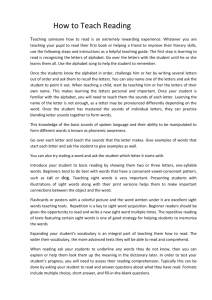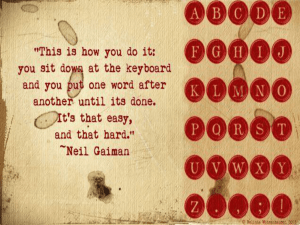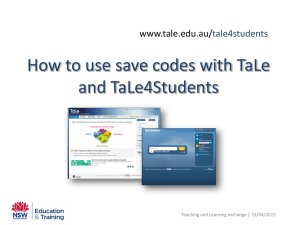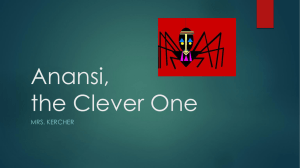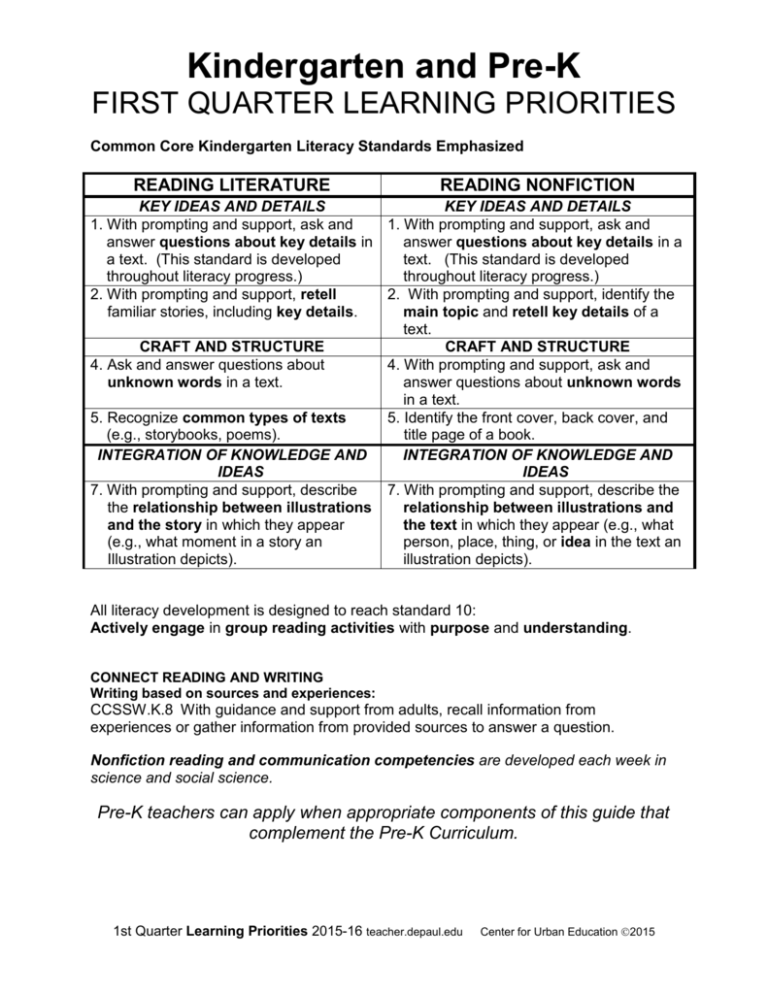
Kindergarten and Pre-K
FIRST QUARTER LEARNING PRIORITIES
Common Core Kindergarten Literacy Standards Emphasized
READING LITERATURE
READING NONFICTION
KEY IDEAS AND DETAILS
KEY IDEAS AND DETAILS
1. With prompting and support, ask and
1. With prompting and support, ask and
answer questions about key details in
answer questions about key details in a
a text. (This standard is developed
text. (This standard is developed
throughout literacy progress.)
throughout literacy progress.)
2. With prompting and support, retell
2. With prompting and support, identify the
familiar stories, including key details.
main topic and retell key details of a
text.
CRAFT AND STRUCTURE
CRAFT AND STRUCTURE
4. Ask and answer questions about
4. With prompting and support, ask and
unknown words in a text.
answer questions about unknown words
in a text.
5. Recognize common types of texts
5. Identify the front cover, back cover, and
(e.g., storybooks, poems).
title page of a book.
INTEGRATION OF KNOWLEDGE AND
INTEGRATION OF KNOWLEDGE AND
IDEAS
IDEAS
7. With prompting and support, describe
7. With prompting and support, describe the
the relationship between illustrations
relationship between illustrations and
and the story in which they appear
the text in which they appear (e.g., what
(e.g., what moment in a story an
person, place, thing, or idea in the text an
Illustration depicts).
illustration depicts).
All literacy development is designed to reach standard 10:
Actively engage in group reading activities with purpose and understanding.
CONNECT READING AND WRITING
Writing based on sources and experiences:
CCSSW.K.8 With guidance and support from adults, recall information from
experiences or gather information from provided sources to answer a question.
Nonfiction reading and communication competencies are developed each week in
science and social science.
Pre-K teachers can apply when appropriate components of this guide that
complement the Pre-K Curriculum.
1st Quarter Learning Priorities 2015-16 teacher.depaul.edu
Center for Urban Education 2015
The Speaking and Listening Standards are Keys to Learning
ACROSS the Curriculum
Comprehension and Collaboration
SL.K.1 Participate in collaborative conversations with diverse partners about
kindergarten topics and texts with peers and adults in small and larger groups.
__SL.K.1a Follow agreed-upon rules for discussions (e.g., listening to others and
taking turns speaking about the topics and texts under discussion).
__SL.K.1b Continue a conversation through multiple exchanges.
SL.K.2 Confirm understanding of a text read aloud or information presented orally or
through other media by asking and answering questions about key details and
requesting clarification if something is not understood.
SL.K.3 Ask and answer questions in order to seek help, get information, or clarify
something that is not understood.
Presentation of Knowledge and Ideas
SL.K.4 Describe familiar people, places, things, and events and, with prompting and
support, provide additional detail.
SL.K.5 Add drawings or other visual displays to descriptions as desired to provide
additional detail.
SL.K.6 Speak audibly and express thoughts, feelings, and ideas clearly.
Students exercise Speaking and Listening competencies as they proceed through
the gradual release of responsibility.
SOURCE of Common Core Standards cited in this guide: http://www.corestandards.org
The standards have been issued with a public license that allows them to be republished for any purpose
that supports the standards initiative. © Copyright 2010. National Governors Association Center for Best
Practices and Council of Chief State School Officers. All rights reserved.
1st Quarter Learning Priorities 2015-16 teacher.depaul.edu Center for Urban Education 2015
2
MATH MIX: New and Continuing PRIORITIES
Research confirms that if the math curriculum includes “frequent cumulative review” that enables students
to retain greater math competence. Among sources supporting this “mix” is the report “Assisting Students
Struggling with Mathematics” of the What Works Clearinghouse, IES Practice Guide, US Department of
Education. This chart is included to organize planning for new math content and inclusion of math
learned earlier in the school year in activities such as: learning centers; “bell ringers”; homework, art,
science, social science--Integrating math into science and social science makes math more meaningful.
Math Practice Standards should be emphasized
—particularly standard 1: Make sense of problems and persevere in solving them.
Week of
New Math
Math “Mix”—Content to Revisit
Homework Essential: Students need to take home an example of how to solve
problems—that teachers prepare or that they prepare so they can practice correctly.
Daily kinds of assessment:
__glossary __journal __my own example __change the problem, solve it
__ _______________ __ _________________________________
Weekly kinds of assessment:
__solve problem, explain patterns and strategies __write math booklet
__make my own “anchor chart” __make “math path”—steps to solution
__ __________________________ __ ________________
1st Quarter Learning Priorities 2015-16 teacher.depaul.edu Center for Urban Education 2015
3
Kindergarten: First Quarter, Weeks 1-2 Learning Priorities
Literature and nonfiction literacy vocabulary listed for each two-week sequence should be incorporated in demonstrations and
guided reading. Writing is integrated into reading so that students revisit texts to respond to questions and tasks.
Literature Genre
Reading Literature
CCSSRL.K.1
Locate information
Answer with evidence
Includes K.5—parts of
book.
LITERATURE
TERMS: BOOK;
COVER; QUESTION;
CHARACTER TRAIT;
PICTURE; STORY
Week of September 7
__fairy tale __folk tale
__realistic fiction __fable
__ ______________________
Take reading interest survey—
”“What’s your favorite story?”
“Who likes to read about
animals?” etc.
Interpret cover of a book—what
does the picture tell us we will
read?
Answer questions about a
picture.
Answer questions about a story.
IDENTIFY/INFER CHARACTER
TRAITS—recommended: use
pictures and words to list GOOD
traits that we have.
Week of September 14
__fairy tale __folk tale
__realistic fiction __fable
__ ______________________
Locate information in a picture.
Identify parts of storybook.
Answer questions about a story—
character traits--identify/infer character
traits based on actions.
Tell how you feel about a character—
and why.
_ picture books _big books
_topic/trade books __videos
__ __________________
LITERACY TERMS:
BOOK; PICTURE
_ picture books _big books
_topic/trade books __videos __
________________
Draw and if appropriate write words
that answer these questions after
listening/looking to picture book or
video:
What do you like about science?
What do scientists do?
Social Science
Draw and dictate words that
Identify parts of a nonfiction book.
Draw and label pictures based on
Nonfiction
Sources
Science
CCSSRI.K.1
Locate information
CCSSRI.K.1
Answer questions
answer these questions—if
possible after listening/looking to
story about school—
What happens in our classroom?
How do we help each other?
What are the rules—why do we
need them?
LITERACY TERMS:
BOOK; PICCTURE
Writing
CCSSW.K.2-Includes speaking and
drawing—SLK 4, 5, 6
Assess knowledge of alphabet
Word Patterns
In addition to sight
words include the Fry
Phrases
Identify parts of a nonfiction book.
Locate information in pictures in
response to questions.
school “tour, to answer these questions:
What happens in our school?
Who are the people?
What are the places?
How do people learn in school?
Alphabet letters (label or match pictures
letters
with letter)
Begin focus on alphabet letters— Speak in sentences. (ongoing)
connect to phonics.
Draw pictures to tell about you.
Assess Phonics Knowledge
PHONICS FOCUS:
PHONICS FOCUS:
Sight Words:
Sight Words:
1st Quarter Learning Priorities 2015-16 teacher.depaul.edu Center for Urban Education 2015
4
Kindergarten: First Quarter, Weeks 3-4 Learning Priorities
Literature and nonfiction literacy vocabulary listed for each two-week sequence should be incorporated in demonstrations and
guided reading. Writing is integrated into reading so that students revisit texts to respond to questions and tasks.
Literature Genre
Reading Literature
CCSSRL.K.2
Answer with evidence—
story sequence.
Follow words on page
(ongoing)
LITERATURE TERMS:
STORY: PARTS OF A
BOOK; WRITER;
ILLUSTRATOR; EVENT;
BEFORE; AFTER
Week of September 21
__fairy tale __folk tale
__realistic fiction __fable
__ ______________________
Week of September 28
__fairy tale __folk tale
__realistic fiction __fable
__ ______________________
Use parts of a book to tell what a
writer and an illustrator do.
Identify an event in a story.
Tell what you feel about the
event.
Retell story sequence.
Tell what you feel about event
in the story.
Infer: Predict what will happen
in a story.
Tell what happened before and
after it.
FLUENCY EMPHASIS:
__rate __expression
__comprehension
FLUENCY EMPHASIS:
__rate __expression
__comprehension
INTEGRATE WRITING and ART:
Draw part of story—relates to
sequence of story –or sort pictures
that show sequence of a story
INTEGRATE WRITING and ART:
Draw part of story—relates to
sequence of story –or sort pictures
that show sequence of a story
Nonfiction Sources
_ picture books _big books
_topic/trade books __videos __
________________
_ picture books _big books
_topic/trade books __videos
__ __________________
Science
or
Social Science
Locate information in pictures and Locate information in pictures
pictures in books in response to
questions.
Start class picture-word display
CCSSRI.K.1
--“Words we know about _____”
Locate information to
Students dictate sentence of the
Answer questions
day—based on “what we learned
Locate information
about”—including one word from
the word display. (Teacher could
LITERACY TERMS: PICTURE;
FIND; INFORMATION; WORD;
post several student examples.)
QUESTION; ANSWER
Writing
CCSSW.K.2-Includes speaking and
drawing—SLK 4, 5, 6
Word Patterns
In addition to sight words
include the Fry Phrases.
and pictures in books in
response to questions.
Continue class picture-word
display--“Words we know about
_____”
Students dictate sentence of the
day—based on “what we
learned about”—including one
word from the word display.
The next day can start with
reading the sentences to
continue the content area
learning.
Speak in sentences
Alphabet letters
Draw or write words
Speak in sentences
Alphabet letters
Draw or write words
PHONICS FOCUS:
PHONICS FOCUS:
Sight Words:
Sight Words:
1st Quarter Learning Priorities 2015-16 teacher.depaul.edu Center for Urban Education 2015
5
Kindergarten: First Quarter, Weeks 5-6 Learning Priorities
Literature and nonfiction literacy vocabulary listed for each two-week sequence should be incorporated in demonstrations and
guided reading. Writing is integrated into reading so that students revisit texts to respond to questions and tasks.
Literature Genre
Reading Literature
CCSSRL.K.2
Tell/retell stories
LITERATURE
TERMS: STORY;
TIME; BEFORE;
AFTER;
CHARACTER;
ACTION; PLACE
Week of October 5
__fairy tale __folk tale
__realistic fiction __fable
__ ______________________
Week of October 12
__fairy tale __folk tale
__realistic fiction __fable
__ ______________________
Recognize time, order (ongoing) Recognize time, order (ongoing)
Identify/Classify parts of a story: Identify/Classify parts of a story:
Characters
Place
Actions
Characters
Place
Actions
Retell story
Retell story
FLUENCY EMPHASIS:
__rate __expression
__comprehension
FLUENCY EMPHASIS:
__rate __expression __comprehension
INTEGRATE
WRITING/SPEAKING/ART:
Speak, write, or draw or sequence
pictures to tell or retell story.
INTEGRATE WRITING/SPEAKING/ART:
Speak, write, or draw or sequence pictures
to tell or retell story.
Nonfiction
Sources
_ picture books _big books
_topic/trade books __videos __
________________
_ picture books _big books
_topic/trade books __videos
__ __________________
Science or
Social Science
Locate and classify information
Locate and classify information
CCSSRI.K.1
Classify information
LITERACY TERMS:
PICTURE;
ILLUSTRATION;
LOCATE; CLASSIFY
Classify information from books
and illustrations, guided by
teacher. Recommended: use
chart—paste or draw pictures to
complete chart.
Writing
Speak in sentences
CCSSW.K.2- Alphabet letters and words
Includes speaking and Draw/write journal
drawing—SLK 4, 5, 6
Word Patterns
PHONICS FOCUS:
In addition to sight
words include the Fry
Phrases
Sight Words:
Recommended: Start project-alphabet pages for personal
alphabet book.
Classify information from books,
videos, illustrations, guided by teacher
Recommended: use chart—paste or
draw pictures to complete chart.
Speak in sentences
Alphabet letters and words
Draw/write journal
PHONICS FOCUS:
Sight Words:
Recommended: Continue (ongoing)
project--alphabet pages for personal
alphabet book.
1st Quarter Learning Priorities 2015-16 teacher.depaul.edu Center for Urban Education 2015
6
Kindergarten: First Quarter, Weeks 7-8 Learning Priorities
Literature and nonfiction literacy vocabulary listed for each two-week sequence should be incorporated in demonstrations and
guided reading. Writing is integrated into reading so that students revisit texts to respond to questions and tasks.
Week of October 19
__fairy tale __folk tale
__realistic fiction __fable
__ ______________________
Literature Genre
Reading Literature
CCSSRL.K.2
Summarize a story
LITERATURE
TERMS:
WHO; WHAT;
WHEN; WHERE;
OPINION; RETELL
Summarize a story: who, what,
when, where
Teacher guides students to
figure out the “message” or
theme.
Tell your opinion of a story
such as “I like it because_____”
or “This was my favorite part:
_____”
FLUENCY EMPHASIS:
__rate __expression
__comprehension
Nonfiction
Sources
Science
or
Social Science
CCSSRI.K.2
LITERACY TERMS:
FACT; SUMMARIZE;
LEARN
Week of October 26
INTEGRATE
WRITING/SPEAKING/ART:
: Speak (dictate), write, or draw
or sequence pictures to tell or
retell story.
_ picture books _big books
_topic/trade books __videos __
________________
Locate information to use in
teacher-guided summary—what
have we learned about __?
Teacher and students list
important facts. Then with
guidance, summarize what you
learned in a picture or in dialogue
with partner.
Summaries will vary but should
include important information.
__fairy tale __folk tale
__realistic fiction __fable
__ ______________________
Summarize a story: who, what,
when, where
Teacher guides students to figure
out the “message” or theme.
Tell your opinion of a story such
as “I like it because_____” or “This
was my favorite part: _____”
FLUENCY EMPHASIS:
__rate __expression __comprehension
INTEGRATE
WRITING/SPEAKING/ART:
Speak (dictate), write, or draw or
sequence pictures to tell or retell story.
_ picture books _big books
_topic/trade books __videos
__ __________________
Continue to guide students to identify
Writing
CCSSW.K.2-Includes speaking
and drawing—SLK
4, 5, 6
Word Patterns
In addition to sight
words include the
Fry Phrases
important information and
summarize—
Locate information to use in teacherguided summary—what have we
learned about ___?
Teacher and students list important
facts.
Then with guidance, summarize what
you learned in a picture or in dialogue
with partner.
Summaries will vary but include
important information.
Speak in sentences
Alphabet letters and words
Draw/write journal
Speak in sentences
Alphabet letters and words
Draw/write journal
PHONICS FOCUS:
PHONICS FOCUS:
Sight Words:
Sight Words:
1st Quarter Learning Priorities 2015-16 teacher.depaul.edu Center for Urban Education 2015
7
Kindergarten: First Quarter, Weeks 9-10 Learning Priorities
Literature and nonfiction literacy vocabulary listed for each two-week sequence should be incorporated in demonstrations and
guided reading. Writing is integrated into reading so that students revisit texts to respond to questions and tasks.
Week of November 2
Literature Genre
Reading Literature
CCSSRL.K.2
summarize
LITERATURE
TERMS:
EXAMPLE; MAIN
IDEA
Nonfiction
Sources
Science
or
Social Science
CCSSRI.K.2
Locate information
then summarize
LITERACY TERMS:
FACT; FIND; LOCATE;
INFORMATION; LEARN
__fairy tale __folk tale
__realistic fiction __fable
__ ______________________
Summarize a story: who,
what, when, where
Give examples from the
Week of November 9 COMPREHENSIVE
ASSESSMENT
__fairy tale __folk tale
__realistic fiction __fable
__ ______________________
Comprehensive Assessment
Summarize who is in a story and what
happens in a story.
Tell what the theme or lesson of the
story is—guided by teacher.
Tell what your opinion of a story is such
as “I like it because_____” or “This was
my favorite part: _____”
story that support the main
idea or theme—guided by
teacher to decide what that
is.
INTEGRATE
WRITING/SPEAKING/ART:
Speak (dictate), write, or draw or INTEGRATE WRITING/SPEAKING/ART:
sequence pictures to tell or retell : assess ability to retell story in words,
story.
pictures
_ picture books _big books
_ picture books _big books
_topic/trade books __videos
_topic/trade books __videos
__ ________________
__ __________________
Comprehensive Assessment
Locate/recall important
information.
Tell information about a topic from
illustration and listening to text.
Teacher and students list
important facts.
Tell how you can learn from pictures
and words about a topic.
Then with guidance,
summarize what you
learned in a picture or in
dialogue with partner.
Writing
CCSSW.K2
CCSSW.K.2-Includes speaking
and drawing—SLK 4,
5, 6
Speak in sentences
Alphabet letters and words
Draw/write journal
Word Patterns
In addition to sight
words include the Fry
Phrases
PHONICS FOCUS:
Sight Words:
Comprehensive Assessment
assess ability to:.
Speak in sentences (ongoing)
Draw pictures and letters to explain.
Comprehensive Assessment
Recognize Phonemic/Phonics progress
Organize sight words by topic
Make own alphabet book—letters that
have been mastered
1st Quarter Learning Priorities 2015-16 teacher.depaul.edu Center for Urban Education 2015
8



